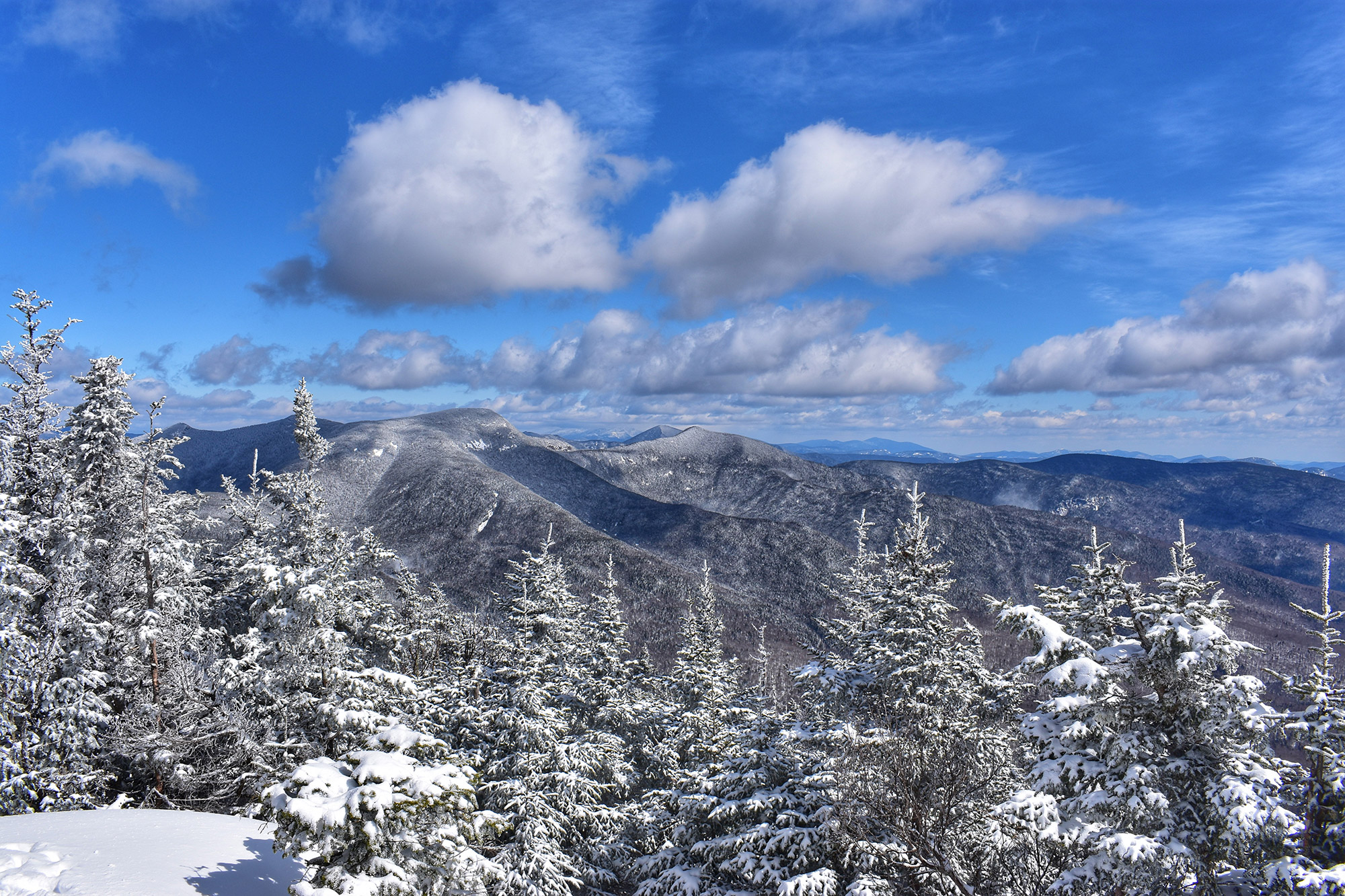The goal of climbing New Hampshire’s 48 mountains over 4,000 feet in elevation and joining the Four Thousand Footer Club has a 60+ year history dating back to 1957. However, over the past few years, the United States Geographical Survey (USGS) has been re-examining the topography of the White Mountains using Light Detection and Ranging (LIDAR), and has made a shocking discovery: at least one of the 48–Mount Tecumseh, the shortest of the 48 4,000-footers—is actually 8 feet shorter than previously thought, putting this now-3,995 foot peak in jeopardy of being excluded from the AMC’s list of recognized 4,000-footers. And while 8 feet is small potatoes in most contexts, for the list-conscious hikers among us, it’s a huge deal.
But, the potential “losers” list may be broader than just Tecumseh. To date, the USGS hasn’t yet made all of the survey data collected public and the AMC has only evaluated the new information pertaining to 26 of the 48 4,000-footers. Still, with more accurate mapping technology available and more survey data to be reviewed, it’s safe to assume that low-lying 4,000-footers besides Mount Tecumseh could be in jeopardy of losing their status as 4,000-footers. Mount Isolation (4,004 feet) and Mount Waumbek (4,006 feet) are two candidates that come to mind. “The NH45” doesn’t have the same ring.
Of course, during the new survey, some mountains could find themselves picking up elevation. For example, at 3,993 feet, Sandwich Dome is just 7 feet shy of the magical mark under the old standards—is it possible it’s “grown”?
Likewise, some peaks could see their prominence (to qualify as a 4,000-footer, a peak must have a minimum rise of 200 feet from all surrounding peaks) increase, thus making them new additions for the 4,000-footer list. Indeed, according to the new data, Guyot now has sufficient prominence on the side facing South Twin. However, the data from Guyot’s other side has either yet to be released or analyzed. But if substantiated, it would mean that a full Pemi-Loop would net a peak-bagger 13—not 12—4,000-footers in one trip.

How Will This Affect List-Conscious Hikers?
Revising the list of 4,000-footers in New Hampshire is certain to send shockwaves through the peak-bagging community. For many pursuing the NH48, this will surely alter their plans—possibly adding new peaks to their lists while subtracting others. For those with more committed projects—like gridding—changes to the list could significantly complicate their quests. Meanwhile, for those competing for a fastest known time (FKT) for completing New Hampshire’s 48 4,000-footers, subtracting Tecumseh could save a speed-hiker a couple of hours (including drive time, of course).
The flux in elevations of the New Hampshire 48 thus begs the question: How, if at all, will the AMC adjust the list? Will it just change the list to reflect the mountains’ true elevations? Or will it continue to include some of these now-“lesser” peaks on the list even though they no longer technically qualify? Believe it or not, this isn’t the first time the list keepers in the Northeast have faced the question.
History of AMC Changes
In the past, the AMC has adjusted the list according to a peak’s true elevation. In fact, the story of the New Hampshire 4,000-footers begins with just 46 peaks, ironically mirroring what was thought to be the number of Adirondack peaks over 4,000 feet in elevation. It wasn’t until the USGS published a new South Twin Mountain quadrangle that the New Hampshire 4,000-footers became 48 with the addition of Galehead Mountain in 1975, followed by Bondcliff in 1980. The most recent change came in 1998, when new survey data lead to Wildcat D replacing Wildcat E on the list of 4,000-footers.
Despite these changes, the AMC has not, to our knowledge anyway, ever just subtracted a 4,000-footer from the list. Indeed, even when they swapped the Wildcats, they made clear that ascents under the old standard would still “count.”

An Adirondack Tradition
With a tradition dating further back than New Hampshire’s (Robert Marshall, George Marshall, and Herbert Clark first completed the Adirondack 46 in 1925) more than 10,000 hikers have followed in their footsteps since, according to the ADK46ers—the ADK46 list is more steeped in tradition than true elevation, as more recent USGS surveys have shown 4 peaks to fall short of 4,000 feet, while one peak found to meet the essential elevation has been omitted (MacNaughton Mountain). Despite the updated information, the ADK46ers continue using the same list of 46 peaks that was used back in 1925. And, as two Tecumseh traditionalists—to be clear, we’ve hiked the mountain a lot—this could be a great solution in New Hampshire as well.
Given all this, what do you think the AMC should do? Would you be excited to see a new list and a new challenge? Or, would you prefer the AMC keep the tradition of the 48 alive? We want to hear! Let us know your thoughts in the comments below.
Tim Peck and Doug Martland
Tim and Doug met long ago at the Eastern Mountain Sports in Canton, Massachusetts. Bonding over a love of slick Quincy Quarry granite, White Mountain sufferfests, and scheming up adventures while folding tee-shirts, today Tim and Doug collaborate to write about their favorite outdoor activities and occasionally get nostalgic about tee-shirt tables.




